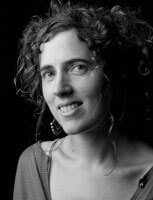Tamara Dean (b. 1976, Sydney, Australia) is a photographic artist whose works explore the informal rites of passage and rituals of young people within the natural world.
Her solo shows include Ritualism, Divine Rites, This too Shall Pass and Only Human.
Dean has received numerous awards including a $10,000 High Commendation prize in the 2013 Moran Contemporary Photographic Award, the 2011 Olive Cotton Award and 2009 Sydney Life: Art & About.
Dean’s works have been widely exhibited both nationally and internationally. Her works have featured in ‘Dangerous Beauty’ curated by Stephan Stoyanov, Bulgaria 2013, the 2013 Aspettando FotoLeggendo festival in Rome, Fotofever Brussels Art Fair, 2012 and Pingyao Photography Festival, China, 2012 as well as at leading Australian galleries including Inheritance 2009 and Hijacked 2 – New Australian & German Photography 2010, both at the Australian Centre for Photography; Sydney Now – New Australian Photojournalism, Museum of Sydney 2007; Terra Australis Incognita at Monash Gallery of Art.
Dean has been awarded artist residencies with ArtOmi, New York (2013), and previously Taronga Zoo, Montsalvat and repeatedly in the remote gold-mining town of Hill End, NSW.
For a decade Dean was a member of Oculi photographic collective.
Dean’s work is held in a number of public and private collections including Artbank, Sydney; The Francis J. Greenburger Collection, New York; the Mordant Family Collection, Australia; and is represented by Olsen Irwin Gallery Sydney and James Makin Gallery Melbourne.
Source: www.tamaradean.com
